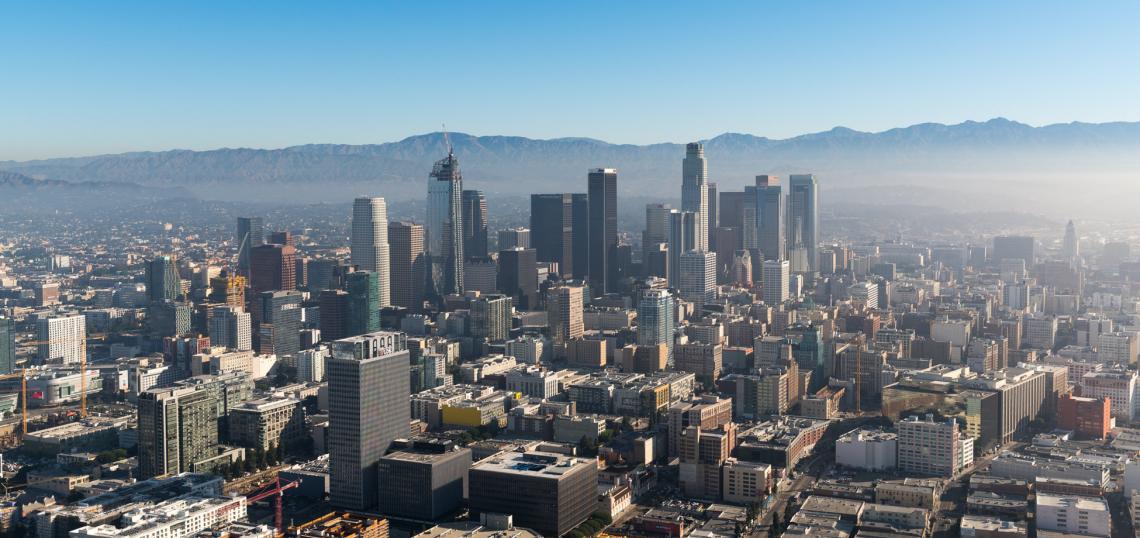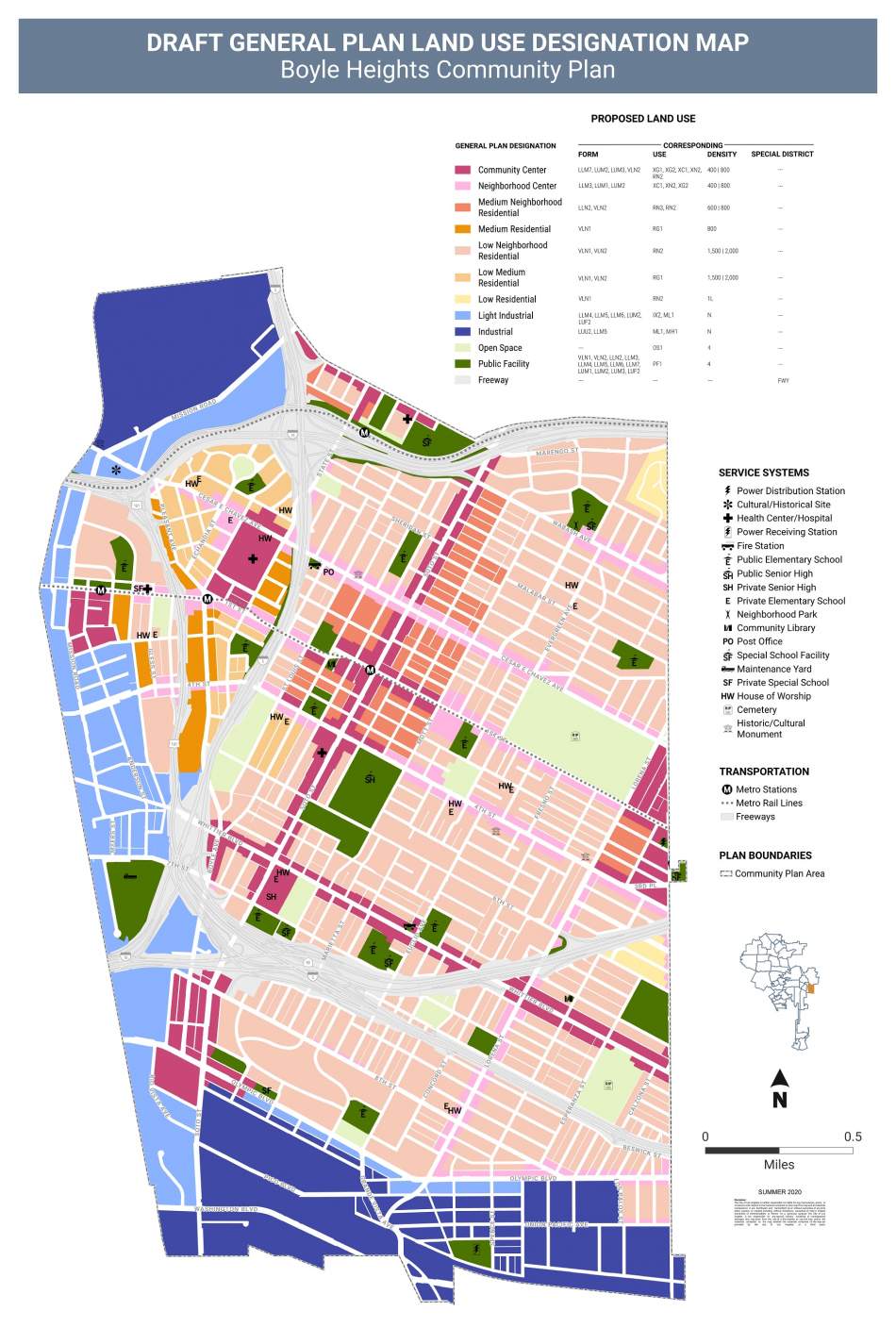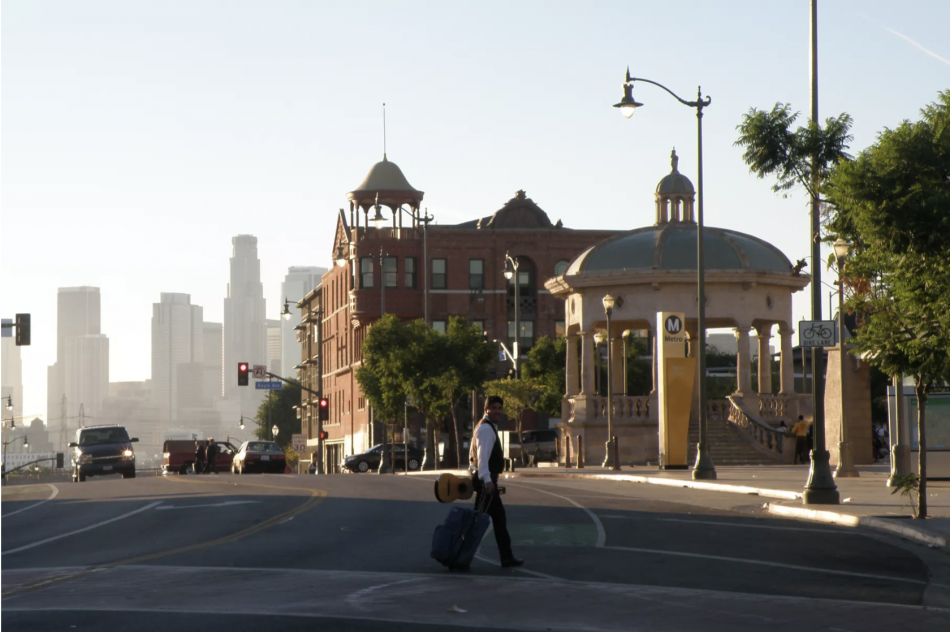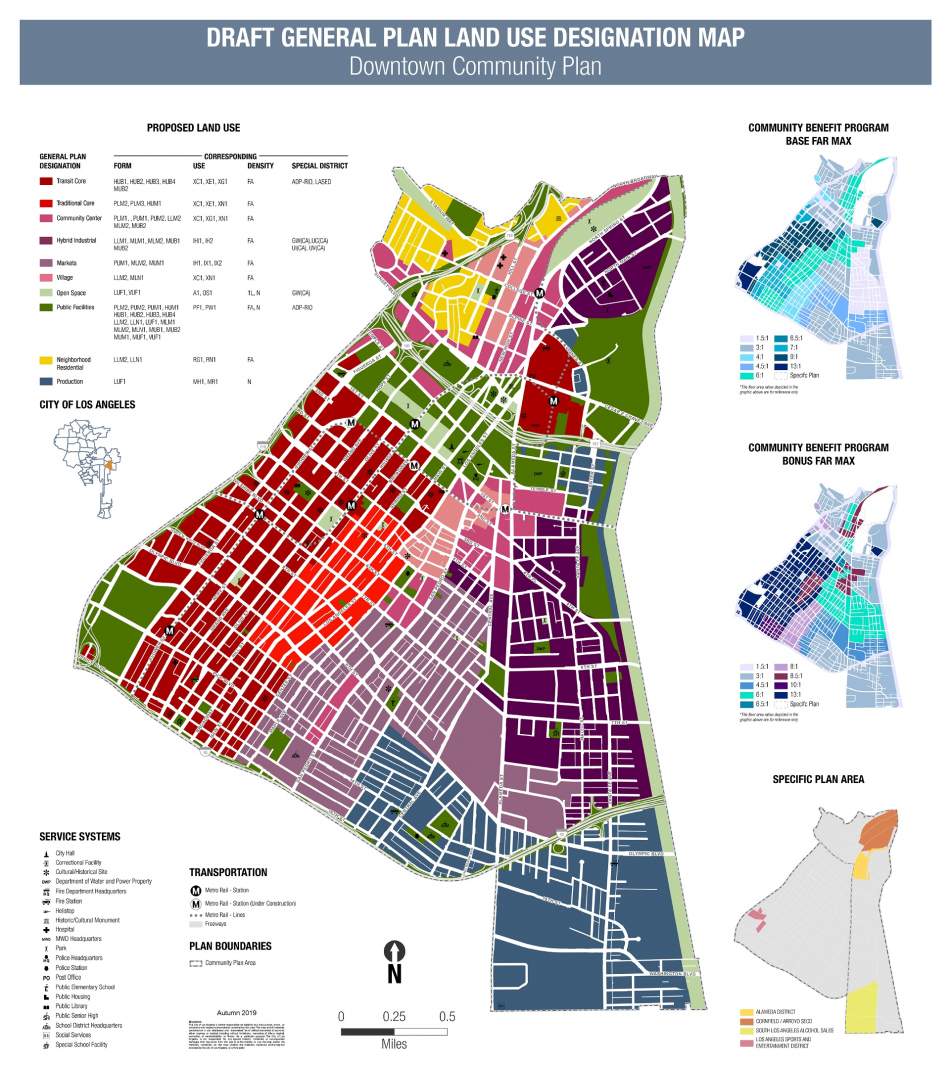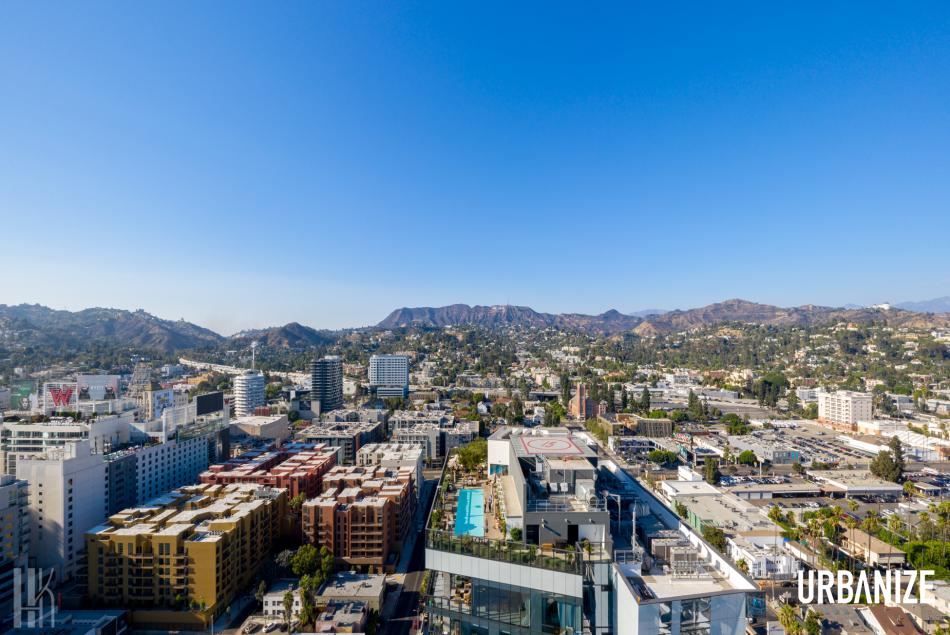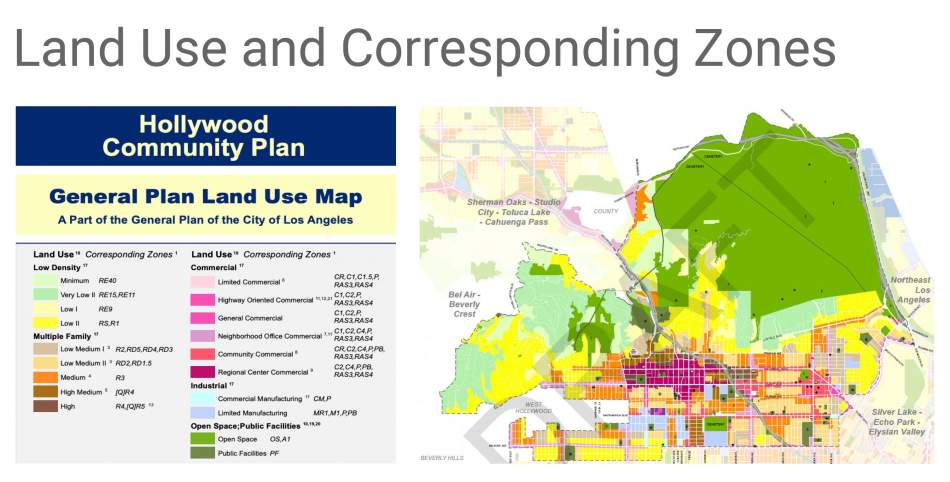After a two-year lull, the City of Los Angeles is once again beginning to process updates to the land use and zoning rules which shape development in three of its central neighborhoods: Boyle Heights, Downtown, and Hollywood.
Last week, the Los Angeles City Planning Commission gave its approval to the Boyle Heights Community Plan update, which has been in the works for a decade. The roughly six-square-mile plan area, sandwiched between the L.A. River and the unincorporated community of East Los Angeles, currently operates based on zoning regulations adopted in the 1990s.
The proposed update, according to a staff report, is intended to account for changing economic conditions within both the neighborhood and citywide, as well as changing goals relating to housing and the environment. Likewise, it acknowledges the numerous physical changes which the neighborhood has undergone in recent years - notably the construction of the new Sixth Street Viaduct and the completion of the L Line's Eastside extension.
At the current time, Boyle Heights is home to approximately 82,000 residents, more than 90 percent of whom are Latino. The neighborhood's median household of income of $47,000 is roughly half of the $91,000 figure for Los Angeles County as a whole, while its median household size of 3.42 persons exceeds the regional median.
The new plan bases its zone changes and regulations on SCAG projections which estimates that Boyle Heights will add 7,000 new residents (in 5,000 new homes) and 9,000 jobs through the year 2040. To account for that, the plan provides capacity for 29,000 new residents (in 11,000 new homes) and 13,000 jobs.
Since the onset of the update effort, the Planning Department has opted to shift growth in Boyle Heights toward commercial boulevards and transit corridors like Soto Street, 1st Street, and Whittier Boulevard, while maintaining the existing profile of the lower-scale residential neighborhoods of the predominantly renter neighborhood. Likewise, the proposed update maintains existing industrial zones adjacent to the L.A. River.
Outside of zoning rules, the Boyle Heights plan also addresses requests frequently made by residents of the neighborhood - including allowances for corner stores (or "Tienditas") in residential zones, as well as accommodations for street vending and small businesses.
The plan, as one of the first out the gate following re:code LA, also enacts several elements of L.A.'s new zoning code. These include form and frontage districts which shape the height and massing of new construction - for example a provision to maintain the two-story massing of the Cesar Chavez Avenue business corridor, while shifting the mass of new construction to the rear of sites.
Additionally, the Boyle Heights plan is among the first to implement a community benefits program, with some similar elements to the Transit Oriented Communities incentives. Various subareas of the program would include accommodations for longer-term affordability covenants of up to 99 years, as well as a new affordability level of "acutely low-income," which refers to households earning no more than 15 percent of the area median income level.
Finally, the plan accounts for the predominantly rent stabilized housing which existing in Boyle Heights, in an attempt to incentive new density on underbuilt properties without requiring demolition of existing units. These include the relaxation of certain setback rules which would otherwise restrict the buildable areas of certain infill sites.
Across the L.A. River, the update to the Central City and Central City North community plans also cleared an important milestone this week, with approval by the City Council's Planning and Land Use Management Committee.
DTLA 2040, as the effort is branded, faced the City Planning Commission in September 2021, and is faced with a May 12 deadline for adoption. New zoning rules aim to facilitate even greater growth in the region's historic center, providing capacity for more than 175,000 additional residents and 100,000 additional jobs through 2040 - roughly 20 percent of the city's expected growth over that time period.
As with the Boyle Heights plans, the Central City update is also a testing ground for re:code LA, introducing form, function, and use districts which regulate scale, massing, open space requirements, and height minimums. Additionally, DTLA 2040 drops parking requirements for the neighborhood - a longtime ask of many housing advocates, which is intended to allow the market dictate how much parking is built.
Likewise, the DTLA 2040 plan includes its own community benefits program - a base-bonus system which will replace the existing Transfer of Floor Area rights program which has shaped much of the skyline. Instead, developers will be able to build beyond the base zoning of their properties through providing a range of incentivized uses such as public open space and affordable housing.
The version of DTLA 2040 reflects several changes requested by 14th District Councilmember Kevin de Leon, who represents Downtown as well as other neighborhoods on the Eastside. Notably, the community plan will move on to the City Council for consideration with a mandatory inclusionary housing policy - requiring new residential developments to include on-site affordable units. Other changes include a requirement that all hotel developments seek entitlement using a Class 3 conditional use permit, as well as a provision for an in-lieu fee through the community benefits program to go toward the construction of public park space within Downtown.
De Leon, who has faced calls for resignation after being captured on a secret recording engaged in a racist conversation with two of his former colleagues, has also called for doing away with the IX1 zone, a controversial element of the plan which would have permanent prohibited the development of market-rate housing within the Skid Row area. Instead, De Leon has proposed that after the recording of covenants for 2,000 restricted affordable housing units within the IX1 area - including more than 1,000 already in development - the city would lift the prohibition and allow the construction of market-rate developments.
Members of the Planning and Land Use Management Committee expressed disquiet at the possibility of creating a zone which would permit only below market-rate housing in Downtown, noting that such a zone has not been enacted anywhere else in the city. As an alternative, Committee Chair Marqueece Harris-Dawson introduced an alternative scheme in which mixed-income developments would be permitted in which a maximum of 20 percent of total units could be rented at market rate, with the remainder to be priced as affordable housing.
Public comment during the meeting was dominated by members of an organization representing garment workers in the Fashion District, who spoke in support of zoning rules which would limit the conversion of industrial buildings to market-rate housing and hotels, as well as a requirement for new space for production within the neighborhood. Commercial property owners in the Fashion District, in contrast, opposed those requirements. Members of the local business improvement district spoke of nearly 700,000 square feet of long-term vacant space in the neighborhood, and argued that the proposed zoning rules would tie them to an industry that had been gradually fleeing the Downtown area.
As part of the same marathon meeting, the Planning Committee also signed off on the long-awaited Hollywood Community Plan update, which is also faced with a May 12 deadline for adoption. The current effort dates to 2012, when a Los Angeles Superior Court judge tossed out an earlier update to the plan after concluding that city officials had relied on outdated population data as a basis for their work.
The Hollywood plan area, which spans 22 square miles from Silver Lake in the east to the City of West Hollywood in the west, is currently home to just over 200,000 residents and 100,000 jobs - numbers which are both expected to gradually increase through 2040. The proposed update to the community plan would offer more than enough capacity for that growth, providing zoning for up to 264,000 residents and 127,000 jobs.
Housing growth within Hollywood would be concentrated along existing transit lines and commercial hubs- including Hollywood and Sunset Boulevards. The Media District, mostly located south of Santa Monica Boulevard to the west of Vine Street, is expected to be reinforced as an employment hub, with greater height limits and new incentives for media uses.
Like its counterparts in Downtown and Boyle Heights, the Hollywood plan includes its own tailored community benefits program, which allow projects that include units for lower-income households to exceed certain zoning limits. However, the bonuses granted to projects, as well as the amount of affordable housing required, will vary between different subareas within the community plan.
The new plan is also coupled with policy changes which could speed the approval of larger affordable and mixed-income housing developments. According to a Planning Commission staff presentation given in 2021, projects making use of the community plan area's affordable housing incentive program would need 200 or more units to trigger site plan review in the regional center subarea and 100 residential units in the multi-family subarea. The increased threshold - up from the citywide baseline of 50 units - would allow ministerial processing for a larger number of developments.
The plan moves onto the Council as 13th District Councilmember Hugo Soto-Martinez, 5th District Councilmember Katy Yaroslavsky and 4th District Councilmember Nithya Raman call for changes which would add new protections and relocation assistance for renter households displaced by development, as well as a provision for no net loss of affordable housing during redevelopment in Hollywood. Additionally, mixed-income projects making use of the incentive program would see their affordability covenants extended to 99 years going forward, up from the 55-year period required today, under the proposal from the Councilmembers.
Additionally, Soto-Martinez has requested further changes in subsequent updates to the community plan, such as the inclusion of East Hollywood and provisions for social housing models.




